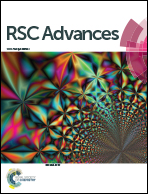Effect of asphaltene precipitation on CO2-flooding performance in low-permeability sandstones: a nuclear magnetic resonance study
Abstract
With nuclear magnetic resonance (NMR), a novel experimental study is conducted to reveal the pore-scale formation damage mechanism of tight sandstones caused by asphaltene precipitation during CO2 flooding. For each core-flooding experiment, the T2 responses of the hydrogen nucleus in the core samples are measured before and after CO2 flooding, and then compared to quantitatively determine the asphaltene precipitate distribution in pore throats with different sizes. It is found that in the immiscible flooding stage, the degree of asphaltene precipitation increases with an increase in the CO2 injection pressure. After entering the miscible flooding stage, asphaltene can be still precipitated, but with a much lower magnitude. The core permeability tends to be reduced after CO2 flooding, and the permeability reduction is positively correlated with the amount of asphaltene precipitated. The results of the NMR experiments show that during the immiscible flooding stage, oil is recovered primarily from the relatively larger pores. A small amount of asphaltene precipitation occurs in the larger pores (1–1000 ms), filling up a small portion of these pore spaces, while little asphaltene shows up in the smaller pores (0.01–1 ms). As the pressure increases beyond the minimum miscibility pressure (MMP), more oil contained in smaller pores is able to be recovered. The smaller pores tend to be more affected by the precipitated asphaltene in comparison to the larger pores. With the asphaltene-filling phenomenon taking place more in the smaller pores, the tight-core permeability can be substantially compromised after CO2 flooding.



 Please wait while we load your content...
Please wait while we load your content...